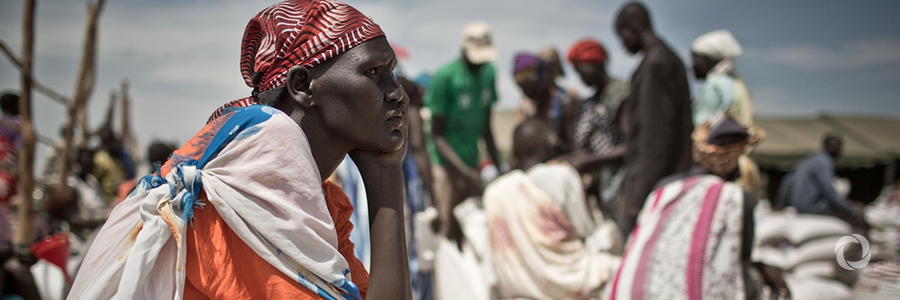Relentless conflict and insecurity throughout the lean period has pushed 6.1 million people – nearly 60 percent of the assessed population – into extreme hunger in South Sudan, though the situation could improve if a sustainable peace takes hold.
Some 6.1 million people facing “crisis”, “emergency” or “catastrophe” levels of food insecurity, according to an Integrated Food Security Phase Classification (IPC) report released on September 28.
The report indicates large-scale humanitarian assistance being provided in many areas of the country was the only factor that prevented an even more devastating outcome.
In response to the report’s findings, the Food and Agriculture Organization of the United Nations (FAO), the United Nations Children’s Fund (UNICEF) and World Food Programme (WFP) called for a sustainable peace across the country, and unhindered, safe access to all areas, where people who survived the fighting but are left with nothing, and need life-saving assistance. If this can be achieved and international funding continues, IPC projections show an improved, though still serious, outlook for the rest of the year and into 2019.
“More than 6 million lives shattered by hunger are just too many,” said Pierre Vauthier, FAO’s Acting Representative in South Sudan. “Assessment after assessment, we find that conflict is the main driver of this desperate situation, making it impossible for farmers to get back on their feet. We are reaching as many people as we can, in almost every county, but it is critical to end the conflict and sustain peace to prevent an already severe food insecurity situation from deteriorating even further. The only thing standing between the people of South Sudan and widespread starvation right now is the massive humanitarian assistance. If peace takes hold, this must be coupled with a resilience programme to rebuild the capacity of the people of South Sudan grow their own food and chase off the spectre of hunger. This IPC demonstrates clearly that if the people of South Sudan have peace, they will be able to improve their own resilience and food security situation.”
Response to date
To date, FAO has supported nearly 2.7 million people with agricultural seeds and tools during the main planting season so that they can increase cereal production. During the planting season, FAO distributed over 4,800 tonnes of crop seeds – the largest quantity to date. FAO also supports fishermen and pastoralists, including providing essential animal health services to protect livestock. This is vital as many South Sudanese depend on their livestock for survival.
UNICEF and partners have admitted 147,421 children suffering from severe acute malnutrition into various outpatient treatment programmes (OTP) and stabilization centres since January 2018. This translates to 69% of the 215,312 target for 2018 and 55% of the 269,140 SAM caseload for this year. Of the children admitted to the OTPs and stabilization centres, 89% of them leave fully recovered.
WFP provides life-saving emergency food supplies, food in return for work to construct and rehabilitate community assets, food for school meals, and special products for the prevention and treatment of malnutrition in children, and pregnant and nursing women. So far in 2018, WFP has reached 4.7 million people with life-saving assistance. While responding to food and nutrition needs now, WFP is preparing to respond to growing needs in 2019. As part of its response, WFP plans to procure 310,000 metric tonnes of food for the first half of 2019. Of this, 175,000 metric tonnes will be pre-positioned in 60 warehouses before the onset of the rainy season in June. Pre-positioning food would save WFP up to US$100 million as airdrops are six times more expensive than delivering by road or river.
Read and download the Integrated Food Security Phase Classification report
Original source: WFP
Published on 28 September 2018

